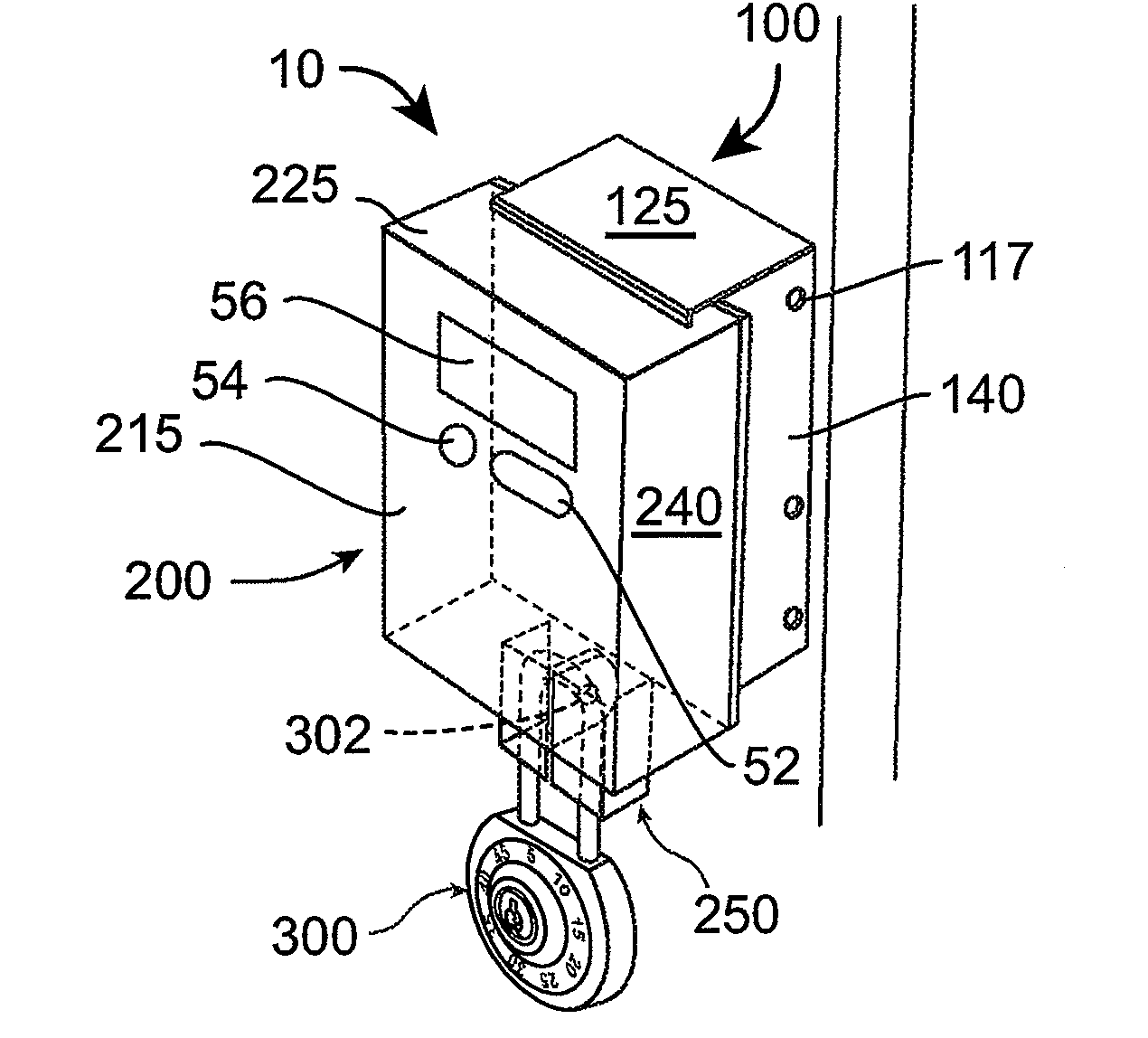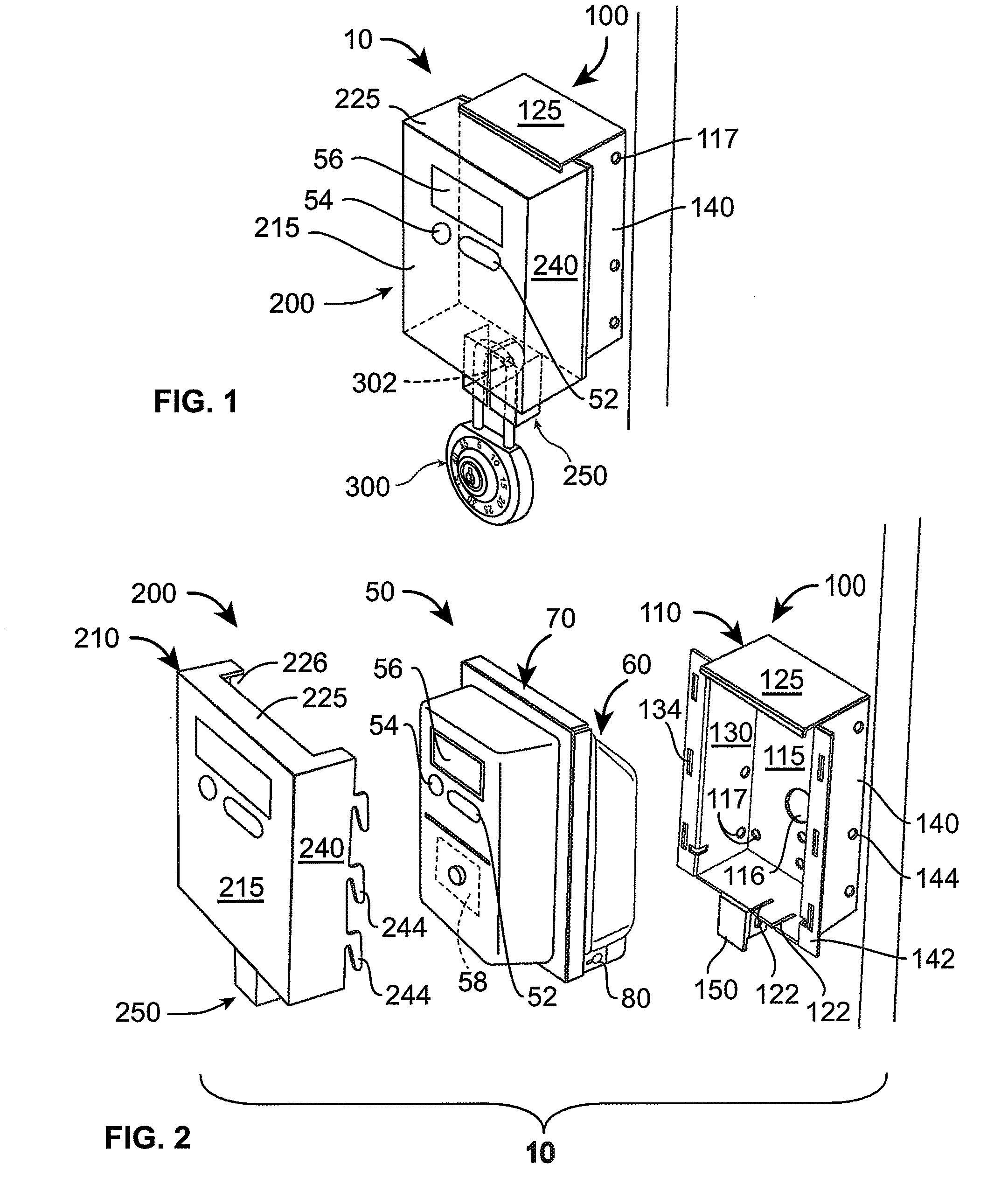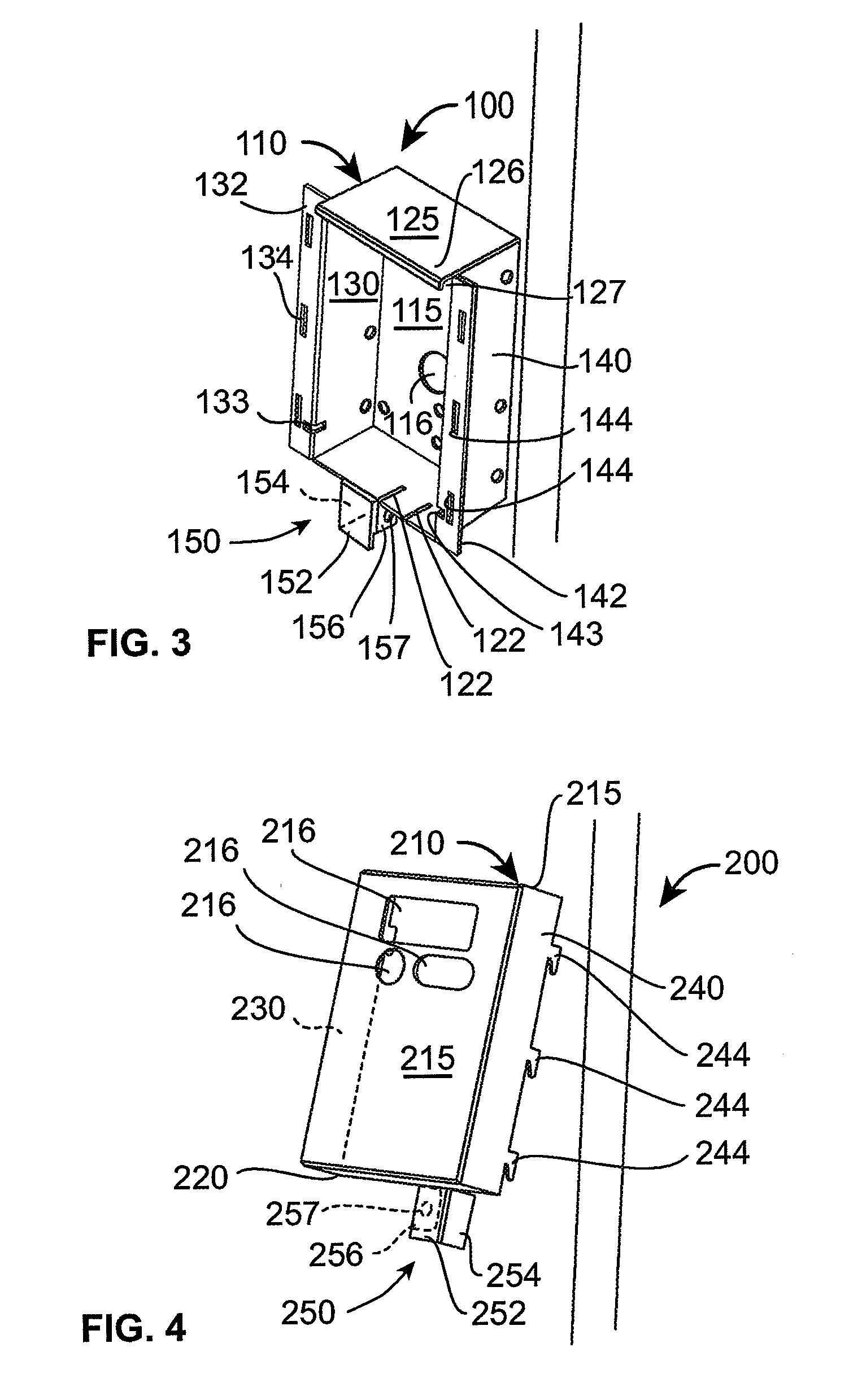Protective case for a wildlife surveillance system
a surveillance system and protective case technology, applied in the field of enclosing and protecting wildlife surveillance systems, can solve the problems of difficult to break into the enclosure which houses the expensive surveillance apparatus, including the sensors, cameras, electronics, and the theft of the entire apparatus, and the known system does not always address the theft problem of the entire apparatus. , to achieve the effect of reducing the accessibility of the shackl
- Summary
- Abstract
- Description
- Claims
- Application Information
AI Technical Summary
Benefits of technology
Problems solved by technology
Method used
Image
Examples
Embodiment Construction
[0046]With initial reference to FIGS. 1 and 2, a protective case 10 for a wildlife surveillance system 50 is shown. The protective case 10 includes a back segment or base 100 and a front segment or cover 200, which, in combination, generally encapsulate the surveillance system 50 therein. A pair of lock guard assemblies 150, 250 associated with base 100 and cover 200, respectively, mate so that corresponding openings of assemblies 150, 250 are able to receive a lock 300 (e.g., a padlock) when mounted to a tree and locked, a shackle 302 of lock 300 cannot readily be accessed, thus keeping the unit secure, as described further below.
[0047]Referring now to FIG. 2, surveillance system 50 can be any of a variety of known wildlife surveillance systems. Surveillance system 50 can include a variety of desired features including, e.g., a camera window 52, a Fresnel lens 54, a flash lens 56, and various user controls 58, all housed within an enclosure 60. In some implementations, the enclosur...
PUM
 Login to View More
Login to View More Abstract
Description
Claims
Application Information
 Login to View More
Login to View More - R&D
- Intellectual Property
- Life Sciences
- Materials
- Tech Scout
- Unparalleled Data Quality
- Higher Quality Content
- 60% Fewer Hallucinations
Browse by: Latest US Patents, China's latest patents, Technical Efficacy Thesaurus, Application Domain, Technology Topic, Popular Technical Reports.
© 2025 PatSnap. All rights reserved.Legal|Privacy policy|Modern Slavery Act Transparency Statement|Sitemap|About US| Contact US: help@patsnap.com



